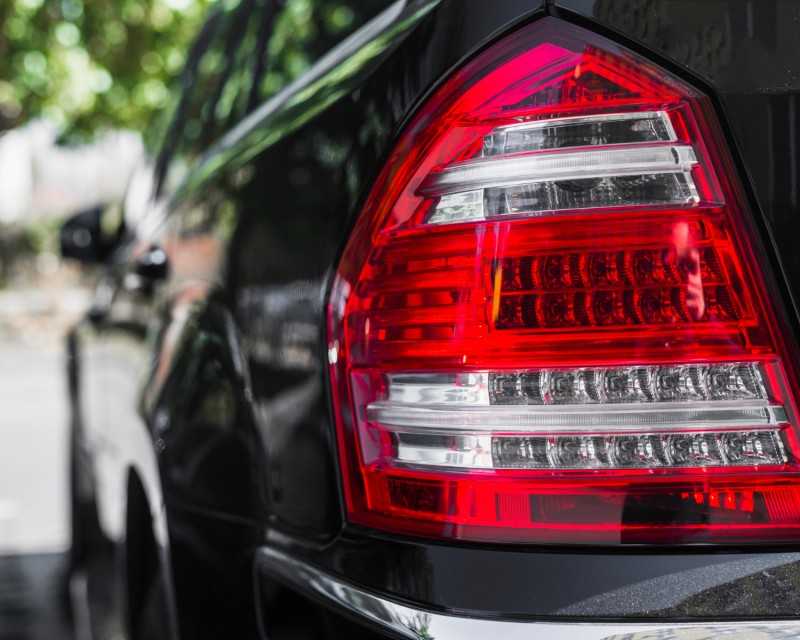Our Scrappage, Recycling and Car Blog
later post | index | earlier post
How To Change Rear Lights in a Car
Friday, 29 September 2023

You may not think about it, but your car’s rear taillights are a vital safety feature. This is especially true when it’s dark, during bad weather, or when visibility is impaired, and it becomes harder for other drivers to see you. Despite this, it’s easy to forget to check whether your rear lights are actually working as they should. Too often drivers are seen on the roads with one taillight out-of-order or only one working brake light.
Driving with a non-functioning rear lamp is illegal and can result in a large fine. Don’t get caught out. Making regular checks on the state of your taillights is an easy way to prevent this from happening. Luckily, replacing dead bulbs is something you can do yourself at home.
What are the different rear lights on a car?
There are three different types of lights at the back of every car:
- Brake lights
- Reversing lights
- Taillights
The three different types of taillights at the back of a car are as follows:
- LEDs: these generally use a smaller amount of energy and last longer than traditional lights.
- Halogen lights: the most common type of light and comes as a standard for most vehicles.
- Xenon lights: generally stronger and brighter than other types of rear light bulb. They also use an electrical arc compared to a filament.
How much does it cost to change a rear light?
Typically, replacing a taillight could cost between £120 to £180 or above, depending on the bulb type you need.
Getting the right part
Before you start to change your rear lights, it’s important to make sure you have everything you need to complete the job. This includes:
- Replacement taillight bulbs - these are vehicle specific, so speak to your local dealer or check an online parts store, like ASM Auto Recycling, to ensure you’ve purchased the correct one.
- A screwdriver and possibly a ratchet
- Safety gloves
- Goggles
Changing your rear lights on a car
You don’t need to be a professional to change the rear lights on your car. Once you have the correct tools, the process is relatively straightforward. However, if you run into difficulties, you should speak to a mechanic as soon as possible.
Before you begin changing the rear lights, you’ll need to take the backlight housing off the back of your car.
How do I take the backlight off my car?
To take the backlight off your car, you will need to open the boot and remove the lens housing. This is done by unscrewing the screws which hold it in place. Make sure you keep these in a safe place, as you’ll need to replace them once you’ve changed your rear light.
Once the screws have been removed, you’ll be able to gently lift the light assembly away. Be careful of the wiring, which is attached to the light assembly, as this will prevent you from pulling it too far from the car. Most rear lenses will come away as a whole. However, some have a removable outer cover which will make your job even easier.
Once you have taken the backlight cover off, you can start to replace the bulbs:
Step 1: Detach the taillight bulb holder.
All bulbs are held in place by a plug that screws into the light assembly. Follow the wires which are attached to the back of the taillight bulb and give the bulb a quarter turn to pull it out.
Step 2: Pull out the old bulb and replace it with a new one.
Most bulbs generally pull straight out, but some may require you to give them a quarter turn before you try and remove them. Providing you have the right size; the new bulbs should slot into the bulb holder without too much difficulty. You can use bulb grease if you’re struggling.
Step 3: Replace the light assembly and lens housing by restoring the screws.
Step 4: Repeat the process on the other side.
Get in touch
With any luck, your rear lights should now be ready to go! If you’re interested in learning more about car maintenance, or for how best to source new parts for your vehicle, feel free to contact us.
later post | index | earlier post
Categories
- Car Maintenance 25
- Driving Abroad 2
- Economy 1
- Environment 3
- Insurance 2
- Light-Hearted 1
- Motoring Guides 6
- Motorways 1
- New Car Sales 1
- Safety 4
- Salvage 14
- Social & Community 5
- Used Cars 19
- Winter Driving 2
Recent posts
- Car Cleaning Tips
- The Most Stolen Cars in UK
- ABI Vehicle Salvage Code of Practice
- Car CO2 Emissions
- How To Replace A Car Air Filter
- Recycling a Car: 5 Fascinating Facts
- Clocking, Cloning, Ringing and Cut & Shut
- MOT: the complete guide
- Used Tyres Guide
- What is GAP insurance?
- Guide to finding a replacement car engine
- Does the scrap value of steel affect your car’s scrap value?
- What are the most valuable salvage car parts?
- The Ultimate Guide to Replacing Wing Mirrors
- ASM Has Procured Over 350 Jaguar and Land Rover Flood-Damaged Cars!